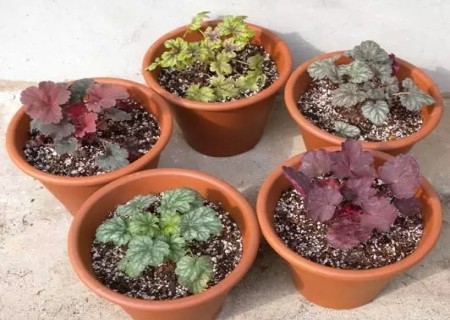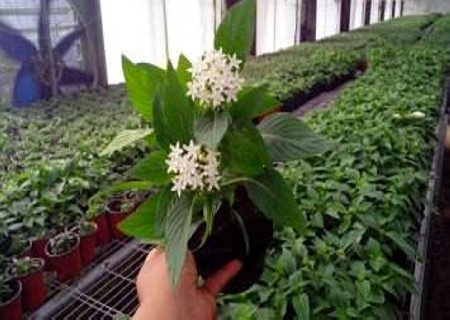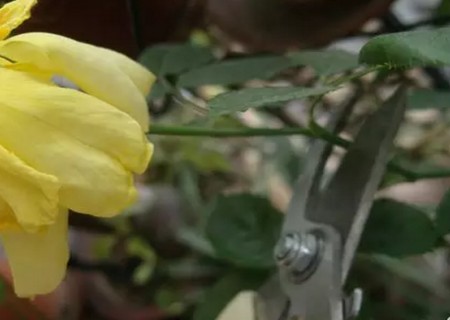Planting method of potted alum root
Soon after the introduction of alum root, the number of species is relatively few, and there is a lack of maintenance experience summarized by enthusiasts. Many flower friends want to know the planting method of alum root. Alum root is also called coral bell in Saxifragaceae. It is a perennial cold-tolerant, shade-tolerant herbaceous flower, which is very suitable for planting in semi-shady environment.

Alum root is a new superior ground cover plant, which has been used in flower border and landscape in recent years, and has good ornamental characteristics and landscape effect. Because the alum root has beautiful leaf color and unique leaf shape, it is gradually loved by the majority of growers. The seedlings grow slowly and grow vigorously after growing up, which is a rare shady ground cover plant with colored leaves, which is suitable for planting under the forest to create an excellent shady ground cover landscape, and it is also suitable to be embellished in flower borders with different themes to enhance the richness of color and can also be watched in pots.
1. Sowing seeds
The suitable temperature for germination is 15-20 degrees, sowing from March to early May, or from September to late October. Put the moist nutritious soil or small grains of red jade soil flat in a container, plant the seeds on the top of the soil and keep the soil moist. Moderately intersprouting, plants grow to 5-10cm and begin to transplant to the ground or pot.
2. Colonization
March-April, or September-November is the best time. Potted plants were first cultivated with 12-15cm pots. The soil with the balance of drainage and water retention was selected for planting. For ground planting, it is necessary to choose a place where there is no direct sunlight, and the plant spacing should be maintained at 20-30cm.
3. Distribution of soil
Alum roots like soils that share drainage and water retention. The editor uses: peat + perlite (2:1) ratio, plus Ordovician slow-release fertilizer. If the ground is planted, dig a 30cm-deep hole in the yard a week before planting, and mix the rotten leaf soil in it.
4. Watering
The surface of the soil is dry and watered through. The bigger the plant is, the more resistant it is to drying, but the lack of water should be paid attention to in the seedling stage. However, due to do not like the high humidity environment, summer watering should be adjusted in the morning or evening cooler time.
5. Fertilization
Slow-release fertilizer from March to April and from September to November. High temperature in summer and no fertilization in outdoor cultivation in winter. In the same period, liquid fertilizer can also be used once every 10-15 days instead.
6. Pruning
Failed flowers or withered leaves can easily lead to plant rot or diseases and insect pests if left untreated. When the failed flowers are removed from the stem, the withered leaves will be removed.
7. Transplanting
Alum root is very easy to grow, no matter the light condition is full light or partial shade, whether the cultivated soil is slightly moist or slightly dry, whether the humidity is high or low, they can grow well. In spite of this, it should be noted that in the process of cultivation, they prefer a semi-shaded, cooler environment and should avoid strong direct sunlight in the afternoon.
Points for attention in alum root cultivation:
The main results are as follows: 1. Cultivated in sunny place in winter, it is cold-tolerant and can grow at a temperature above-15 ℃.
2. Growing in semi-shade in summer, avoid strong light.
3. Use soil and fertilizer: plant in the soil with good drainage and add slow-release fertilizer. During the growth period, proper fertilization should be applied.
4. Watering: follow the principle of "dry and wet". The surface of the soil is dry and watered. Because you don't like being too wet, watering can be properly controlled in summer.
5. Plant the alum root in an inclined place. This is because they like substrates with good drainage. Although they can tolerate high fertilizer content or high pH value for a short time, alum roots grow more vigorously in soilless substrates with good drainage and low fertilizer content.
6. Alum root propagation can also be propagated by leaf insertion, and it is very simple, not only with fast propagation speed, but also with multiple plants at one time.
Time: 2019-05-24 Click:
- Prev

Planting and cultivation techniques of starry flowers
Star flowers, also known as five-star flowers, have excellent height, plant shape and color, and can be matched with petunia or peacock grass to produce summer colors. It is heat-resistant and drought-resistant, can overcome extreme heat and humidity, and continues to blossom until frost. Small flowers in the shape of five-pointed stars are scattered among the large flowers.
- Next

Planting technique of rose cuttings
Roses are the favorite flowers of most female friends. If you can receive a beautiful bouquet of roses on Valentine's Day, I think even the angry girls will suddenly become enlightened. Of course, there are so many things that affect people's mood that it is impossible for someone to send you roses every day. In that case,
Related
- Fuxing push coffee new agricultural production and marketing class: lack of small-scale processing plants
- Jujube rice field leisure farm deep ploughing Yilan for five years to create a space for organic food and play
- Nongyu Farm-A trial of organic papaya for brave women with advanced technology
- Four points for attention in the prevention and control of diseases and insect pests of edible fungi
- How to add nutrient solution to Edible Fungi
- Is there any good way to control edible fungus mites?
- Open Inoculation Technology of Edible Fungi
- Is there any clever way to use fertilizer for edible fungus in winter?
- What agents are used to kill the pathogens of edible fungi in the mushroom shed?
- Rapid drying of Edible Fungi

